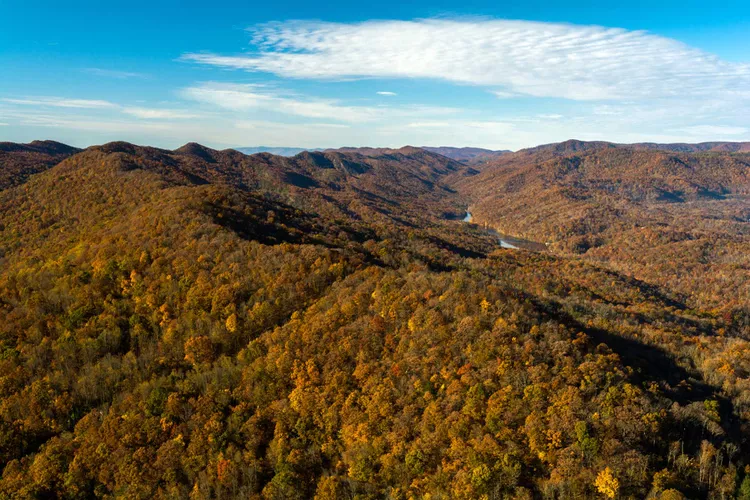Summary
Cumberland Gap National Historical Park, located where Kentucky, Tennessee, and Virginia meet, is a 14,000-acre destination that forges a passageway through the Appalachian Mountains. Forming a natural corridor between the mountains, it was used first by migrating animals, then by Native Americans, who used the path for centuries for trade. It was then used by settlers — most famously by Daniel Boone — who utilized the gap on their journey to settle the West.
The gap was formed by several geological forces, including a raging river, plate tectonics, and a giant meteorite that struck the Earth less than 300 million years ago.
These days, people come to enjoy the park’s 85 miles of trails, stand in three states at once, walk through subterranean passages, and enjoy stargazing in the park’s wilderness. Here’s what you need to know to plan a visit.
What to Do

Start your trip with some context; learn about the history of the park by joining a guided tour of the Hensley Settlement, established in 1903. The four-and-a-half- to five-hour tour costs $10.
For adventure seekers, consider the Gap Cave tour that explores the park’s underground passages. The tour features rooms filled with stalagmites, bats, and flowstone cascades, a deposit formed from water flowing along cave walls. The Gap Cave tour is priced at $8, and reservations can be made up to one month in advance by calling (606) 248-2817.
If you prefer to explore on your own, the park offers 85 miles of trails that traverse all three states, leading to spectacular waterfalls and vistas. Pinnacle Overlook boasts the best views over Cumberland Gap. These trails range from easy strolls to challenging multi-day backcountry hikes, such as the 21-mile Ridge Trail, which runs the park’s entire length.
Wildlife sightings in Cumberland Gap National Historical Park include foxes, bears, deer, bobcats, and over 150 species of birds. Dogs are permitted in the park but must be leashed at all times.
Where to Stay
Camping under the stars is a highlight at Cumberland Gap National Historical Park. The park’s Wilderness Road Campground in Virginia features 160 sites nestled in a lush wooded area. Of the 160 sites, 41 include electrical hookups, and most can accommodate RVs or trailers up to 50 feet. Each site includes access to hot showers and potable water and can host up to eight people, four tents, and two vehicles.
Camping rates are $18 per night for a tent site without electricity and $24 per night for a site with an electrical hookup. Reservations can be made through Recreation.gov or by calling (877) 444-6777.
For those interested in backcountry camping—where light pollution is minimal—a free permit can be obtained from the park’s visitor center. Bear activity is prevalent in the backcountry, so utilizing bear-proof food containers is advised at all times. Reservations for backcountry camping can be made up to three months in advance by calling (606) 248-2817.
If camping isn’t ideal for you, consider nearby towns such as Middlesboro, Kentucky; Cumberland Gap, Tennessee; and Tazewell, Tennessee for traditional lodging. Look into the availability of log cabins and other accommodations on Airbnb to enhance your experience.
When to Go
Cumberland Gap National Historical Park is open year-round, offering a unique experience during each season. The caves provide respite from summer heat, fall foliage is perfect for photography, and winter transforms the park into a picturesque wonderland. However, spring is particularly delightful when the weather is mild, and wildflowers flourish.





